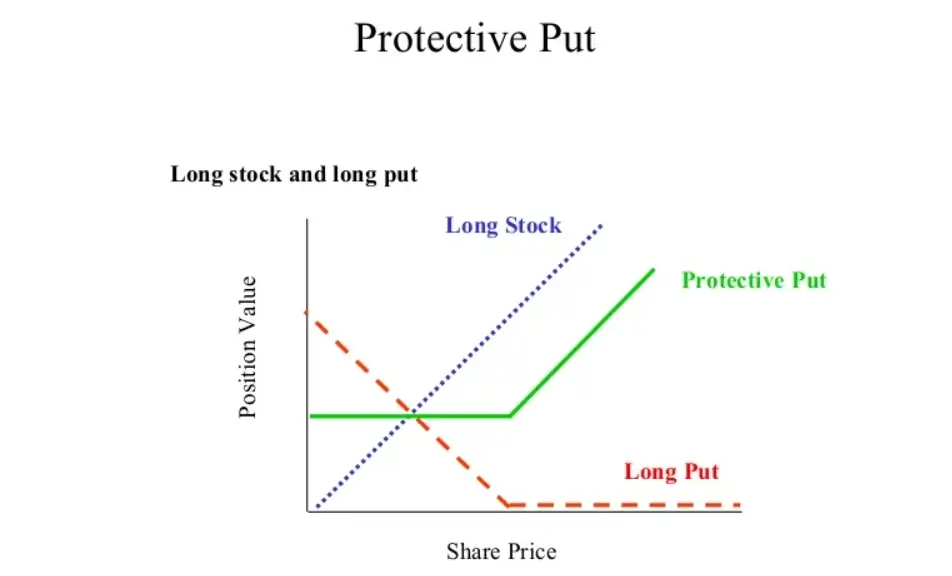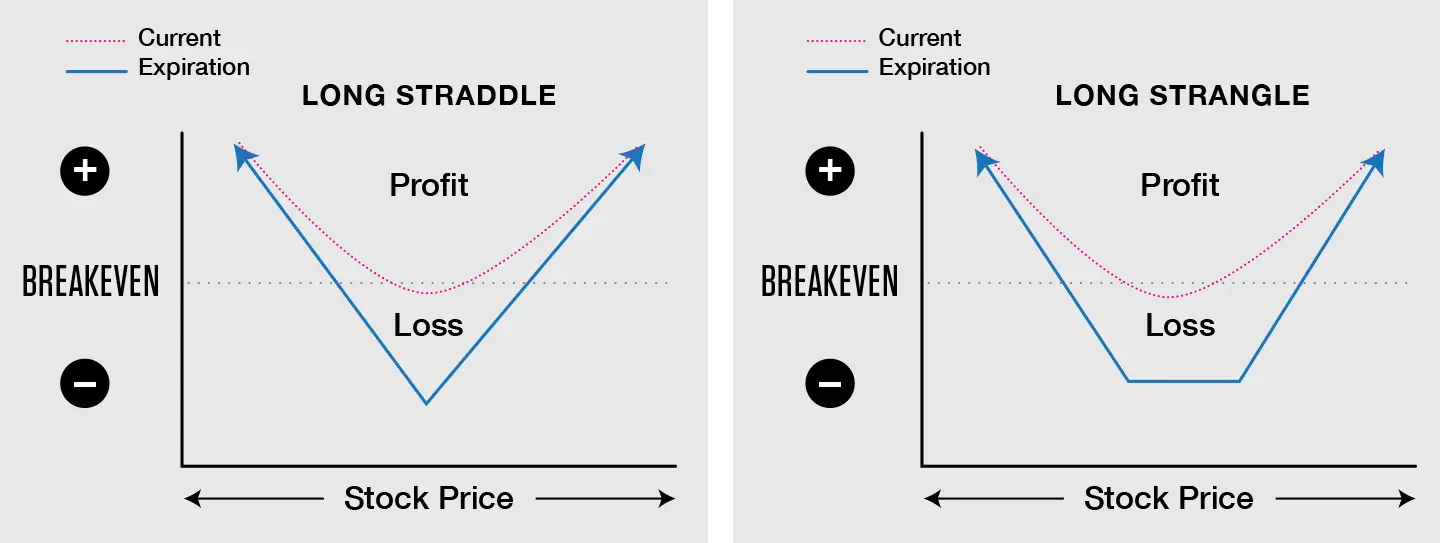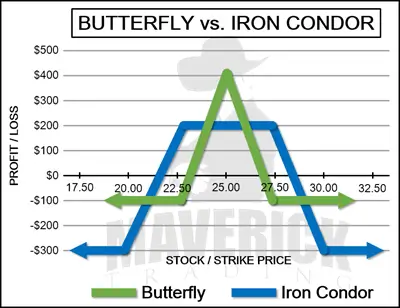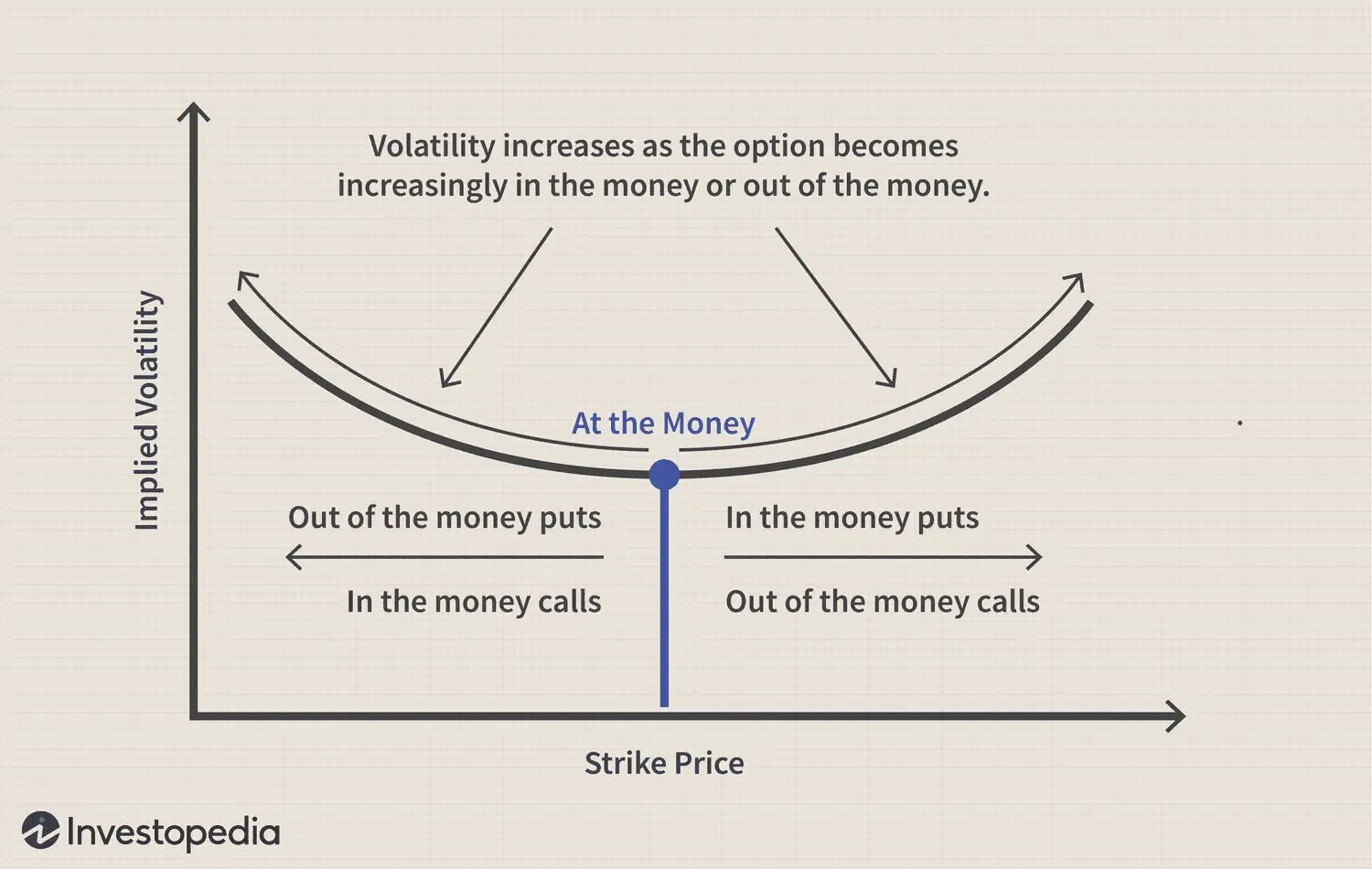Market Corrections: Options Strategies for Savvy Traders
Don't let a downturn sink your portfolio! This guide equips options traders with strategies to navigate market corrections. Learn how to leverage options for profit potential during volatile periods.

Market corrections can be unsettling for even the most seasoned options traders. The sudden price fluctuations and increased volatility demand quick thinking and strategic adjustments. As you navigate these turbulent waters, having real-time insights and effective strategies at your disposal can make all the difference. This article intends to provide you with robust techniques to steer through market corrections with confidence and agility, empowering you to protect your investments and seize new opportunities.
"By failing to prepare, you are preparing to fail." - Benjamin Franklin
Understanding the dynamics of market corrections is crucial. We will explore:
- Identifying key signals using real-time market data
- Adjusting and diversifying your portfolio to mitigate risk
- Utilizing protective options strategies like puts and straddles
- Employing technical analysis for informed decision-making
- Maintaining psychological resilience during periods of high volatility
Ready to transform uncertainty into opportunity? Let's dive in.
Corrections: What Options Traders Need to Know
When the market takes a sudden downward turn, it can be unsettling. However, understanding the mechanics and implications of a market correction can provide you with the tools to navigate these turbulent times. At its core, a market correction refers to a decline of 10% or more in the price of a security, asset, or a market index from its most recent peak. They are a natural part of market cycles and, believe it or not, present opportunities for savvy options traders.
Corrections often signal that the market is reevaluating asset prices, rebalancing based on new information or changing economic conditions. For the unprepared trader, this can result in significant losses. However, as an options trader, you possess unique strategies that can help not only to protect your portfolio but also to profit from these downturns.
Success hinges on your ability to anticipate these corrections through vigilant market monitoring and employing strategic trades. Real-time data and insights become your best allies. Leveraging tools such as technical analysis, implied volatility indicators, and current economic reports allows you to make informed decisions. When corrections seem imminent, being prepared with a well-formulated trading plan can make all the difference.
Remember, market corrections are temporary. They can last from a few days to several months, but they often set the stage for new growth. Therefore, maintain a level head, use your trading tools wisely, and don't shy away from adjusting your strategies as needed. Your informed approach can turn these potential pitfalls into profitable opportunities.
Identifying Key Signals: Real-Time Insights into Market Movements
When it comes to identifying key signals during market corrections, real-time insights play a crucial role. Market corrections can cause heightened volatility, and being able to accurately interpret signals can help you make more informed trading decisions. Here are some strategies to effectively decode these market movements:
Understanding Volatility Indicators
Volatility is an inherent feature of market corrections. Keep an eye on indicators like the VIX (Volatility Index), often dubbed the market's "fear gauge." A rising VIX suggests increasing uncertainty and widespread fear among investors, which typically leads to more significant price swings. Monitoring this index helps you gauge the market sentiment and adjust your trading strategy accordingly.
Analyzing Volume Patterns
Volume is another critical signal. During market downturns, elevated trading volumes can indicate strong conviction behind the price movements. Pay attention to volume spikes during significant price changes, as they often precede or confirm major market trends. Using real-time trading platforms with advanced volume analysis tools can provide you with quicker and more precise data.
Leveraging Moving Averages
Moving averages help smooth out price data to identify trends over a specific period. For real-time insights, focus on the 50-day and 200-day moving averages. A death cross, which occurs when the 50-day moving average falls below the 200-day moving average, can signal the onset of a more prolonged downturn. Conversely, a golden cross can indicate potential recovery. Use these insights to fine-tune your trading positions.
Monitoring Economic News
Economic reports, earnings announcements, and geopolitical events can also serve as real-time signals for market corrections. Develop a habit of following financial news closely. Utilize real-time news platforms and set up alerts for significant economic indicators such as unemployment rates, GDP growth, and consumer confidence indexes. This approach ensures you stay ahead of news that could impact market movements.
Incorporating these real-time insights into your trading strategy can provide a significant edge in navigating market corrections. By understanding and reacting swiftly to these signals, you can better position yourself to mitigate risks and capitalize on opportunities.
Adjusting Your Portfolio: Strategies to Mitigate Risk
Adjusting your portfolio during a market correction is crucial to mitigate risk and safeguard your investments. One effective strategy is rebalancing your portfolio. This involves adjusting the weight of your asset allocations to reflect your risk tolerance and current market conditions. For instance, if a market correction causes a significant drop in the value of your stock holdings, you might consider reallocating some of your investments to more stable assets such as bonds or precious metals.
A strategic move can be the use of protective puts. Think of these as insurance for your investments. By purchasing put options, you have the right to sell your stocks at a predetermined price, which can shield you from further losses if the market continues to fall.
Another technique is employing a collar strategy. This involves holding the underlying stock, buying a put option to protect against downside risk, and selling a call option to offset the cost of the put. This strategy effectively limits both gains and losses, offering a balanced approach to risk management during turbulent times.
Moreover, diversification plays a pivotal role in risk management. By spreading your investments across various asset classes and sectors, you minimize the impact of a downturn in any single market segment. Consider adding non-correlated assets to your portfolio to enhance its resilience against market corrections.
Lastly, continually reassess your portfolio's performance and realign it with your financial goals. Utilize tools and platforms that provide real-time insights to ensure your adjustments are timely and informed.
In essence, proactive portfolio adjustments, like rebalancing your assets, employing protective puts and collar strategies, and embracing diversification, can fortify your investments against market volatility. With these strategies, you can navigate corrections confidently and maintain your financial stability.
Leveraging Put Options: Protecting Your Investments
Protective puts serve as your insurance policy against significant portfolio losses. By buying a put option, you gain the right to sell a stock at a determined price, effectively setting a floor on how low your investments can go. This strategy becomes especially useful during market corrections, where the downturn can quickly erode the value of your holdings.

In addition to purchasing protective puts, you might also consider selling put options. This approach can be favorable for long-term investors who are looking to buy shares in businesses they like at a potentially lower cost. When you sell a put, you take on the obligation to buy the stock at a set price, which can be a viable alternative to purchasing shares outright during a bear market.
It’s essential to understand the risks associated with put options. While buying puts limit your downside to the cost of the option, selling puts involves more risk as you are obligated to buy the stock if it falls below the strike price. Nevertheless, if executed judiciously, selling puts can provide an additional stream of income and an opportunity to acquire quality stocks at a discount.
Another effective strategy is the married put, where you purchase shares of stock and simultaneously buy put options for an equivalent number of shares. This combination allows you to benefit from the upside potential of the stock while guarding against significant losses. Essentially, the premium paid for the puts acts as a hedge, providing peace of mind during uncertain times.
Leveraging put options demands a careful analysis of market conditions and a clear understanding of your risk tolerance. The flexibility and power that options offer can be harnessed to not only protect your investments but also potentially enhance your returns. By incorporating these strategies, you position yourself to navigate through market corrections with greater confidence and resilience.
Profit Opportunities: How to Use Call Options in a Downturn
When the market takes a downturn, call options can still offer substantial profit opportunities. Typically, purchasing call options is a bullish strategy, betting on the upward movement of stock prices. However, in the midst of market corrections, you can use call options to capitalize on potential rebounds or safeguard potential losses.
Firstly, one effective approach is deep in-the-money calls. These calls have high intrinsic value and less premium tied to time value. The advantage here is that they provide significant leverage, allowing you access to substantial upside potential while limiting the downside risk relative to buying the actual stock.
Moreover, downturns often increase implied volatility, leading to lower relative prices for call options. This scenario creates a buying opportunity for traders who anticipate a future market recovery. By acquiring calls at depressed premiums, you stand to gain considerably when the market eventually bounces back.
Another strategy worth considering is the covered call, even in a downturn. While this might seem counterintuitive, it can be an efficient way to generate income. Here, you sell call options against stocks you already own. Despite a declining market, the premiums collected from selling these calls can offset some of the losses in your portfolio, effectively cushioning the blow.
For those more comfortable with risk, ratio call spreads can be beneficial. This involves buying a call option while simultaneously selling more call options at a higher strike price. If the market recovers gradually, this strategy can generate a higher return due to the premiums collected from the sold calls, though it does come with increased risk if the stock skyrockets.
Key Considerations:
- Monitor implied volatility: Look for calls with lower premiums due to higher volatility.
- Choose strike prices wisely: Opt for deep in-the-money calls for intrinsic value.
- Be mindful of expiration dates: Select options with timeframes aligning with expected market turnaround.
In conclusion, using call options during a market downturn can enhance your portfolio's potential upside while mitigating some risks. By employing strategies such as deep in-the-money calls, covered calls, and ratio call spreads, you can position yourself to take advantage of rebound opportunities effectively.
Straddle and Strangle Strategies: Navigating Uncertainty with Confidence
Both straddle and strangle strategies can be powerful tools for options traders, especially during uncertain market periods. These strategies enable you to capitalize on significant market movements while limiting the risk involved.
The straddle strategy involves purchasing both a call and a put option at the same strike price and expiration date. This tactic is most effective when you expect a major move in either direction but aren't sure which way the market will go. For instance, earnings announcements or major economic news often trigger such volatility, making straddles a favorable choice.

On the other hand, the strangle strategy offers a slightly different approach. This strategy involves buying a call and put option, but with different strike prices. Generally, the put option will have a lower strike price and the call option will have a higher strike price, both with the same expiration date. The advantage here is a lower premium cost compared to straddles, though this comes at the expense of needing a bigger market move to become profitable.
Consider this: a long straddle becomes profitable when the price of the underlying asset moves significantly higher or lower than the strike price by more than the total premium paid. Conversely, a long strangle requires even larger price movements owing to the dispersed strike prices. Still, the lower initial cost of a strangle can be appealing if you're on a budget or trying to mitigate upfront expenses.
These strategies are not without their risks. High volatility can amplify profits, but low volatility could lead to total premium loss. Hence, it’s crucial to analyze market conditions and use these strategies judiciously. Tools like volatility indicators and economic news can provide invaluable insights when choosing the right moment to deploy these tactics.
Remember, both strategies require a keen understanding of market dynamics and a well-thought-out risk management plan. They’re most effective when part of a diversified trading approach, which balances potential gains with an acceptable level of risk.
Advanced Option Strategies: Iron Condors and Butterflies
When market corrections loom, advanced option strategies like Iron Condors and Butterflies can be invaluable. These strategies provide a balanced approach that can help you maintain profitability despite market swings.
Iron Condors: This strategy involves selling an out-of-the-money put and call, while simultaneously buying a further out-of-the-money put and call. Iron Condors are particularly effective in a low volatility environment and when you anticipate minimal movement in the underlying asset. The main benefit here is the limited risk with predefined profits.
By constructing an Iron Condor, you establish a range where you believe the stock will trade, and if it remains within this range until expiration, you pocket the premium. This can be an excellent strategy during market corrections, where stocks might hover within a certain price band without large directional movement.
- Sell 1 OTM (Out of The Money) Put
- Sell 1 OTM Call
- Buy 1 further OTM Put
- Buy 1 further OTM Call

Butterflies: The Butterfly spread consists of both call and put options. Specifically, an Iron Butterfly combines selling an at-the-money straddle (both put and call at same strike) and buying protective wings further out of the money. This strategy is profitable if the stock price remains around the strike price of the short options.
The Iron Butterfly can be advantageous during market corrections when there is a belief that the volatility will subside and the stock will trade within a tight range. What sets it apart is the unique structure that caps both potential loss and gain, making it a controlled risk strategy.
- Sell 1 ATM (At the Money) Put
- Sell 1 ATM Call
- Buy 1 further OTM Put
- Buy 1 further OTM Call
Both these strategies allow you to take advantage of time decay (theta) and potentially low volatility, making them powerful tools in your trading arsenal during market corrections.
The Role of Implied Volatility: Exploiting Market Sentiment
Implied volatility (IV) is a crucial concept for options traders, especially during market corrections. It represents the market's forecast of a likely movement in the underlying asset's price and is often synonymous with market sentiment. When implied volatility spikes, it typically indicates heightened fear or uncertainty among investors, while a drop signals complacency or confidence.
As an options trader, understanding and leveraging IV can provide you with distinct advantages. Higher IV means higher option premiums, which can be beneficial if you're selling options. For instance, if you decide to sell puts during a market downturn, increased premiums can amplify your returns while offering a potential entry point into stocks at a lower price. This strategy is particularly useful for risk-averse investors looking to benefit from market dips without taking on the direct risk of holding the stock outright.

Conversely, buying options when IV is low can be an excellent strategy if you anticipate future volatility. This allows you to get in at a lower cost and potentially benefit from more significant price movements. It’s essential to monitor IV trends and compare them against historical averages to determine whether options are relatively cheap or expensive at any given time.
Furthermore, implied volatility can inform your decision on which strategies to employ. In low-volatility environments, strategies like short straddles, short strangles, and long butterflies are often more profitable. These techniques capitalize on the market's lack of movement and can generate steady income through premium collection.
Always consider the broader economic context as you interpret IV. A spike in implied volatility might correspond with significant geopolitical events, corporate earnings reports, or unexpected economic data releases. Utilizing real-time insights and staying informed about market news will help you gauge whether the changes in IV are justified and how to position your trades accordingly.
Understanding and exploiting implied volatility can make a substantial difference in your trading outcomes. By aligning your options strategies with the current IV environment, you can better navigate market corrections and optimize your profitability.
Hedging Strategies: Insuring Your Positions Against Volatility
Hedging is all about reducing your risk without sacrificing too much of your potential upside. As an options trader, you have a unique set of tools at your disposal to guard against market volatility. One fundamental strategy is the use of protective puts. By purchasing a put option for a stock you own, you create a safety net; if the stock price falls, the value of the put option increases, offsetting some or all of the losses from the stock itself.
Another approach is employing covered calls. This involves selling call options on stocks you already hold in your portfolio. The premium you receive from the call options provides a buffer against potential losses in the stock. If the stock price remains stable or declines, you benefit from the premium collected. However, if the stock price increases significantly, you may have to sell the stock at the strike price specified in the call option.
For more advanced traders, strategies like the iron condor can offer a robust way to hedge. This involves selling an out-of-the-money call and put, while simultaneously buying further out-of-the-money call and put options. The goal here is to profit from low volatility by capturing premiums from the short positions while limiting risk with the long positions.
Additionally, the calendar spread is another sophisticated strategy that involves taking advantage of different expiration dates. This strategy works by buying and selling options with the same strike price but different expiration dates. This can be particularly effective when you foresee periods of increased volatility at specific times, allowing you to hedge more precisely.
Lastly, consider the seagull option strategy. This involves two call options and a put option or two puts and a call. A seagull strategy allows you to hedge your positions while potentially gaining from minor upward or downward movements in the underlying asset.
Hedging is not about eliminating risk entirely, but about making it manageable. By thoughtfully employing these strategies, you can navigate through market corrections with greater confidence and resilience.
Risk Management Essentials: Safeguarding Your Capital
Effectively managing risk is the cornerstone of successful options trading, especially during volatile market corrections. The ability to safeguard your capital requires a clear understanding of your risk tolerance, meticulous planning, and disciplined execution. Let's delve into some essential strategies that can help you protect your investments.
1. Assess Your Risk Tolerance: Understanding your financial and emotional capacity to handle losses is critical. This involves evaluating how much of your portfolio you're willing to risk on each trade and ensuring that it aligns with your overall investment goals. Consider using tools and calculators to get a precise measure of your risk tolerance level.
2. Use Protective Puts: One of the most effective ways to hedge against potential losses is by using protective puts. These options act as an insurance policy for your investments, allowing you to sell your underlying asset at a predetermined price, thereby limiting your downside risk.
3. Employ Position Sizing: Controlling the size of your positions can drastically reduce your exposure to risk. By only risking a small percentage of your trading capital on any single trade, you avoid significant losses that could decimate your portfolio. A common rule of thumb among traders is to risk no more than 1-2% of their account on a single trade.
4. Stick to Your Trading Plan: Creating a detailed trading plan and adhering to it can help you avoid making impulsive decisions driven by market emotions. Your plan should include entry and exit criteria, profit targets, and stop-loss levels. Consistency in following your plan is essential to successful risk management.
5. Utilize Advanced Strategies: Consider implementing advanced options strategies such as the seagull option strategy. This involves combining two call options and a put option (or vice versa) to limit downside risks while maintaining the potential for gains. Another advanced approach is the iron condor strategy, which can be used to capitalize on low volatility periods and generate returns within a specific price range.
Effective risk management not only safeguards your capital but also enhances your ability to make informed and calculated decisions during market fluctuations. By carefully assessing your risk tolerance, utilizing protective strategies, and maintaining a disciplined approach, you can navigate market corrections with confidence and resilience.
Adapting to Market Changes: Flexibility in Option Trading
When it comes to adapting to market changes, flexibility is your best ally. The options market is dynamic and ever-changing, and your strategies should be too. In times of market corrections, staying rigid can be detrimental. Instead, adopt a mindset of continual adaptation.
First, understand that not all market corrections are created equal. Deeper knowledge helps you decide whether to ride out the storm or take swift action. Utilize delta-neutral strategies such as straddles and strangles to benefit from volatility, whichever direction it goes.
Another highly effective strategy is to leverage moving averages. They can act as indicators to fine-tune your entry and exit points during volatile periods. This, coupled with real-time data analysis, arms you with insights to adapt your portfolio instantaneously.
Moreover, regularly review your positions. Adjusting your portfolio dynamically ensures that you are not overly exposed to risk. Employing stop-loss orders can serve as an automatic risk management measure, providing a safety net in tumultuous times.
You should also keep an eye on key economic indicators, as they often prelude significant market shifts. Being proactive rather than reactive is invaluable. Use real-time economic calendars and news alerts to stay ahead of the curve.
Flexibility also means being open to learning. The market is an eternal teacher, and each correction holds lessons. Post-mortem analyses of your trades can offer actionable insights for future scenarios. Tools and educational resources tailored for options traders are indispensable in this continuous learning journey.
Lastly, don't forget the psychological aspect. Mental flexibility is crucial to stay calm and composed. Emotional resilience allows you to make rational decisions, even when the market sends your pulse racing. Personalizing your trading approach and adapting it to your comfort zone while considering market dynamics will lead you to more effective decision-making.
Psychological Resilience: Staying Calm During Market Turbulence
Market corrections can test even the most experienced traders’ resolve. During these periods, it's crucial to maintain psychological resilience to avoid making impulsive decisions that could harm your portfolio. Understanding your own risk tolerance and emotional triggers can help you navigate these tumultuous times with a clear mind.

One key strategy is to establish a solid trading plan before engaging in any trades. This plan should include predefined entry and exit points, as well as risk management tactics tailored to your tolerance for potential losses. By sticking to this plan, you can mitigate the influence of panic and emotional stress on your decisions.
Another effective approach is to simplify your focus. Instead of spreading yourself thin across various sectors, concentrate on stocks that are currently dominating the news or those related to precious metals, which often perform better during downturns. This narrowed focus can keep you grounded and minimize the overwhelming feeling that often accompanies market corrections.
Additionally, selling put options can be an excellent strategy to manage emotional strain. This method allows for the potential to acquire stocks at a lower price while also collecting premium income, providing a buffer during market declines.
Historical precedence also suggests that adopting a contrarian approach can be lucrative during bear markets. Investors who purchased stocks during the early 1970s, 1980s, the 2008 financial crisis, and the 2020 crash were notably rewarded in the ensuing recoveries. Although emotionally challenging, staying invested during downturns can yield significant long-term benefits.
Finally, it’s essential to recognize that worrying excessively about market downturns is counterproductive. Focus on what you can control—your reactions and strategies—rather than the market’s unpredictable nature. By maintaining a steady, informed mindset, you equip yourself to turn market turbulence into an opportunity for growth.
Maximizing Gains: Using Leverage Wisely During Corrections
Leverage can amplify your gains significantly during market corrections, but it also multiplies the risks. As an options trader, using leverage wisely is crucial for navigating these volatile times.
First, when employing leverage, it's essential to understand your risk tolerance. Ask yourself how much you can afford to lose without it affecting your financial stability. Since leveraged positions can lead to larger losses, knowing your risk threshold helps maintain your emotional and financial well-being.
Another key strategy is setting clear entry and exit points. Define your profit targets and stop-loss levels before entering a trade. This helps in minimizing emotional decisions during market swings. Utilizing real-time trading tools can assist in executing these points efficiently.
Furthermore, consider the benefits of inverse ETFs during market corrections. These instruments move opposite to the market index, providing opportunities to profit in a downturn. Pairing inverse ETFs with call options can enhance return potential while mitigating some risks of leveraged trades.
Lastly, always remember the importance of continual learning and staying informed. Use available resources to keep abreast of market news and potential shifts. Knowledge can significantly hedge against the dangers of leverage and help you capitalize on market movements effectively.
Real-Time Tools and Platforms: Enhancing Your Trading Efficiency
To navigate market corrections efficiently, leveraging the right tools and platforms is paramount. These resources not only provide you with real-time insights but also offer advanced functionalities that can enhance your trading strategies.
Trading Platforms with Advanced Analytics: Opt for trading platforms that offer robust analytical tools. In the Indian market, platforms like Zerodha's Kite, Upstox Pro, and 5Paisa Trade Station are highly regarded for their comprehensive suite of analysis and trading features. These platforms offer real-time data streams, customizable charting tools, and even algorithmic trading capabilities.
News and Economic Indicator Alerts: Being able to access the latest news and economic indicators promptly can make a significant difference in your trading performance during market corrections. Tools such as Moneycontrol, Economic Times, and Bloomberg Quint are excellent sources for continuous updates on economic reports, market-moving news, and events that could affect your trading decisions.
Options-Specific Tools: Tools that specialize in options trading can be particularly valuable. Software like Opstra DefineEdge and Sensibull provide capabilities to visualize and manage your options strategies, monitor implied volatility, and simulate potential outcomes based on different scenarios.
Mobile Trading Apps: In a fast-paced market, having the ability to make trades on the go can be crucial. Mobile trading apps from top Indian brokers like Zerodha Kite, Upstox, and Angel Broking allow you to respond to market movements promptly, offering full-featured trading capabilities right on your smartphone.
Educational Resources: To further enhance your understanding and skills in options trading, consider enrolling in advanced courses like “Option Strategies: A Mentorship Program” by TradePik Academy. This program offers in-depth training and mentorship to help you deploy effective options strategies during market corrections.
By integrating these real-time tools and platforms into your trading routine, you can stay ahead of the curve and execute strategies with precision and confidence. Remember, the key to success in options trading during market corrections lies in the ability to adapt quickly to new information and market conditions.
Continual Learning: Staying Informed with Market News and Analysis
To stay ahead in the fast-paced world of options trading, continual learning is crucial. Staying informed with real-time market news and in-depth analysis allows you to anticipate changes and make informed decisions. Here are some effective strategies to do just that:
- Subscribe to Reputable Financial News Sources: Ensure you get timely updates from trusted financial news platforms. Consider The Wall Street Journal, Bloomberg, and Reuters for comprehensive coverage.
- Utilize Financial News Apps: Mobile apps like CNBC, Yahoo Finance, and Investing.com can send real-time alerts directly to your phone, keeping you in the loop throughout the trading day.
- Follow Market Influencers: Financial analysts and veteran traders often share their insights on social media platforms like Twitter and LinkedIn. Following these influencers can provide a broader perspective on market movements.
- Join Trading Communities: Online forums and groups, such as those on Reddit or dedicated trading websites, can be valuable resources for discussing strategies and sharing market news.
- Attend Webinars and Online Courses: Many financial institutions and educational platforms offer webinars and courses on market analysis and option trading strategies. These can be a great way to deepen your understanding of market dynamics.
- Read Research Reports: Accessing detailed market research reports from brokerage firms can offer deeper insights into market trends and forecasts.
By actively engaging in these activities, you can maintain a well-rounded perspective on the market, which is vital for making strategic decisions amidst market corrections. Remember, in trading, knowledge isn't just power—it's a significant competitive edge.





